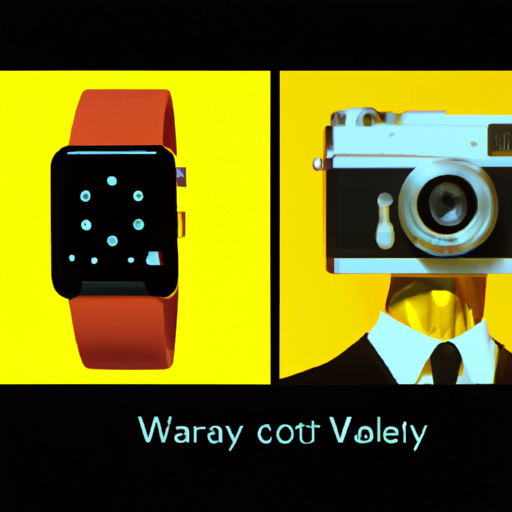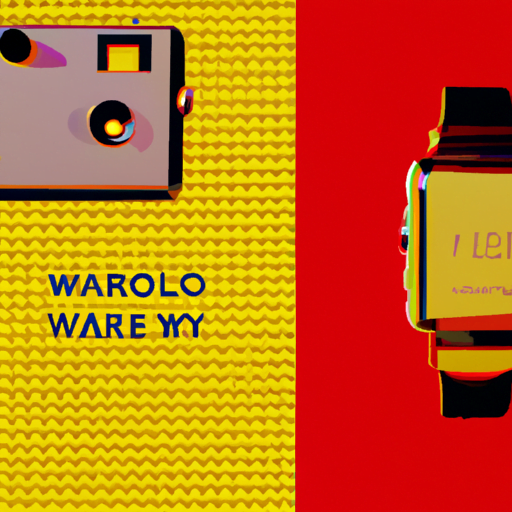
-
Table of Contents
Designing for Wearable Technology: Fashion and Function

Wearable technology has become increasingly popular in recent years, with devices like smartwatches, fitness trackers, and augmented reality glasses becoming more prevalent in our daily lives. As these devices become more integrated into our lifestyles, the importance of designing them with both fashion and function in mind becomes paramount. In this article, we will explore the intersection of fashion and technology in wearable design, and how designers can create products that are both stylish and practical.
The Rise of Wearable Technology
Wearable technology has come a long way since the introduction of the first fitness tracker. Today, we have a wide range of devices that can be worn on the body, from smartwatches that can track our steps and heart rate to augmented reality glasses that can overlay digital information onto the real world. The market for wearable technology is expected to reach $74 billion by 2025, according to a report by Grand View Research.
One of the key drivers of this growth is the increasing demand for devices that seamlessly integrate into our lives. Consumers no longer want to sacrifice style for functionality; they want devices that not only perform well but also look good. This has led to a shift in the way wearable technology is designed, with fashion becoming an integral part of the design process.
The Importance of Fashion in Wearable Design
When it comes to wearable technology, fashion plays a crucial role in the adoption and acceptance of these devices. People are more likely to wear a device if it complements their personal style and doesn’t stand out as a piece of technology. This is especially true for devices that are worn on the body, such as smartwatches and fitness trackers.
Designers need to consider the aesthetics of their wearable devices and ensure that they are visually appealing. This involves paying attention to details such as the materials used, the color palette, and the overall form factor. For example, Apple’s smartwatches are known for their sleek and minimalist design, which appeals to a wide range of consumers.
Another important aspect of fashion in wearable design is customization. People want to be able to personalize their devices to reflect their individuality. This can be achieved through interchangeable bands or customizable watch faces, allowing users to tailor the device to their own style. Fitbit, for example, offers a wide range of bands for their fitness trackers, catering to different tastes and preferences.
Case Study: The Intersection of Fashion and Function
A great example of a company that has successfully combined fashion and function in wearable design is Fossil. Fossil is a well-known fashion brand that has ventured into the world of smartwatches. Their smartwatches not only look stylish but also offer a range of features that make them highly functional.
Fossil’s smartwatches come in a variety of designs, catering to different fashion preferences. They offer both traditional round-faced watches and more modern square-faced options. The watches are made with high-quality materials such as stainless steel and leather, giving them a premium feel.
Functionality-wise, Fossil’s smartwatches are powered by Google’s Wear OS, which provides access to a wide range of apps and features. Users can track their fitness, receive notifications, and even make payments using their smartwatch. Fossil has managed to strike a balance between fashion and function, creating devices that are both stylish and practical.
Designing for Different User Needs
When designing wearable technology, it’s important to consider the different needs and preferences of users. Not everyone wants the same features or the same design. Some users may prioritize fitness tracking, while others may be more interested in receiving notifications or using their device for contactless payments.
Designers should conduct thorough user research to understand the target audience and their specific needs. This can involve surveys, interviews, and usability testing. By gathering insights from potential users, designers can create products that meet their expectations and address their pain points.
Additionally, designers should consider the context in which the wearable device will be used. For example, a fitness tracker that is primarily used during workouts may have different design requirements compared to a smartwatch that is worn throughout the day. Factors such as durability, water resistance, and comfort become important considerations in these scenarios.
Future Trends in Wearable Design
As wearable technology continues to evolve, there are several trends that are shaping the future of wearable design:
- Integration with fashion brands: We are seeing more collaborations between technology companies and fashion brands, resulting in wearable devices that combine the best of both worlds. For example, Louis Vuitton has partnered with Google to create a luxury smartwatch that blends high fashion with advanced technology.
- Focus on sustainability: With the growing concern for the environment, there is a rising demand for sustainable wearable technology. Designers are exploring materials and manufacturing processes that are eco-friendly and reduce waste.
- Augmented reality glasses: While smartwatches and fitness trackers have dominated the wearable market, augmented reality glasses are expected to gain traction in the coming years. These glasses have the potential to revolutionize industries such as healthcare, gaming, and education.
Conclusion
Designing for wearable technology requires a careful balance between fashion and function. Consumers want devices that not only perform well but also look good. By considering the aesthetics, customization options, and user needs, designers can create wearable devices that seamlessly integrate into our lives.
As the market for wearable technology continues to grow, it’s important for designers to stay ahead of the trends and anticipate the needs of consumers. By embracing collaborations with fashion brands, focusing on sustainability, and exploring new form factors such as augmented reality glasses, designers can shape the future of wearable design.
Ultimately, the success of wearable technology lies in its ability to enhance our lives without compromising on style. With the right approach to design, wearable devices can become an indispensable part of our daily routines.
